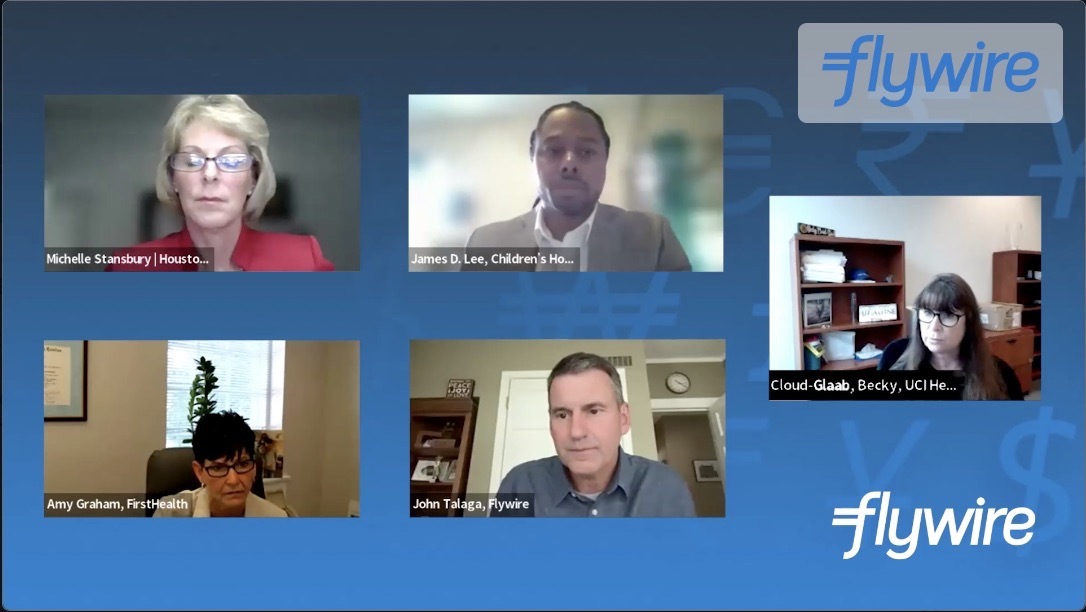A recent survey of more than 200 healthcare IT leaders conducted by Flywire illuminated the evolving role of IT as the advent of digital services reshape the industry and propel healthcare into a digital future. Up to this point, the term digital healthcare, also referred to as telehealth, has described the ability for providers to offer virtual care to patients, reducing the necessity for patients to physically be onsite for care. According to an article in the Journal of the American Medical Informatics Association: “Telehealth programs overcome physical barriers to provide patients and caregivers access to convenient medical care.”
The impact of digital care on the industry has been swift and dramatic. In a 2021 study, Research firm McKinsey & Company, found that overall telehealth utilization for office visits and outpatient care grew exponentially in the early days of the pandemic. In fact, utilization was 78 times higher in April than in February 2020. While those numbers have declined, they have stabilized well above pre-pandemic levels. By the end of 2021, telehealth utilization was still 38X higher than before the pandemic.
With the strong onslaught of telehealth services, it might be tempting to associate digital healthcare solely with telehealth, but doing so would greatly miss the full picture of the sweeping changes happening in the industry. Instead, digital healthcare should refer to the reality that digital solutions and services are here to stay and transforming every area of the healthcare business.
These changes have had the greatest impact on IT leaders and their teams. In that same survey of 200 IT leaders, 94% said that the job is more complex than it was five years ago, forcing them to take on aspects of their job that have fallen outside of how the role is typically defined. As more departments onboard solutions to help digitize previously manual workflows, IT teams are being brought deeper into the decision making process, sitting at the forefront of greater collaboration across stakeholders.
In a recent webinar, hosted by Flywire, IT and revenue cycle leaders from Houston Methodist, UC Irvine, Children’s Hospital of Los Angeles, and FirstHealth of the Carolinas gathered to discuss the results of the survey and how this growing dynamic has increased collaboration between their departments.
This article will examine critical insights from the webinar, including the impact IT has on improving the patient's financial experience, the technology they deem critical to transforming their organizations, how they work together to evaluate the effect of new technologies such as predictive analytics and automation, and the shared vision they have around the patient's financial future.

IT, revenue cycle leaders meeting weekly, creating innovation incubators
One of the key takeaways from the webinar is that IT and revenue cycle teams are meeting more frequently than ever before. At UCI Health, Becky Cloud-Glaab, Executive Director, Revenue Cycle, said that their IT and revenue cycle departments collaborate closely in weekly meetings where IT partners review open tickets and current projects to improve the patient's financial experience:
At UCI Health, we consider our IT group our partners. We don't consider them like another department that there's a push and pull; they're truly our partners. We work very closely with them and we provide the business need for moving forward… We believe that we deliver state-of-the-art care, so we need to make sure that we are delivering a state-of-the-art or outstanding patient financial experience.
Beyond more frequent touchpoints, a recent trend for health systems is to develop innovation incubators focused on driving modernization into the organization, including advancements in the financial experience. Texas-based Houston Methodist has developed a Center for Innovation that encourages departments to find the best solution for patients, even if it requires going beyond their core EHR system. According to Michelle Stransbury, VP of IT at Houston Methodist: "The structure of that team is made up of individuals across our organization, so we actually hold dual roles…We do that for a reason. One, we know where our problems are in the organization- what we're trying to solve. We pilot different solutions and once they pilot well, then we hand it off to operations."
These incubators help IT and the revenue cycle to better understand each other's technology needs. “We collaborate very well so that we can roll these new solutions out as quickly as possible. We look across everything that has to do with the patient, whether it's from the front end to their experience while they're in the hospital to the back end on the revenue cycle on their billing side as well.”
While still novel, these centers are beginning to emerge in some of the most forward-thinking health systems across the country. In a recent talk, Maryland-based LifeBridge Health also stated they’d developed a center of innovation to help guide their digital strategy.
Security is in focus, down to the contract level
Healthcare organizations face a unique challenge in protecting their patient data and payment information from malicious actors. As healthcare bounds into its new digital future, there are massive security concerns, particularly when it comes to financial information. 75% of IT leaders say that their organization needs to invest more in payment security to maintain PCI compliance. As data becomes more accessible at more locations, IT leaders are hoping for a stronger emphasis on security and integration, and are pressuring to ensure constant updates of technology operations and security.
To meet compliance with regulations and security standards, IT and finance leaders are working to develop a shared strategy for protecting the organization's information. By working together, the two teams can ensure the organization is investing in the right security measures to protect their data both internally and externally as they work with technology partners.
At Children’s Hospital of Los Angeles, the security team is involved in the contracting process to ensure any outside technology partners meet the required security standards. All of these departments are utilizing their talents to prioritize security and protect patient data.

Hospitals chip away barriers to patient payments, look to provide 24/7 support
One of the areas being most affected by the digital transformation of the revenue cycle is patient billing and payments. Our survey found that most IT leaders think much more about business outcomes than ever before, with 90% saying patient collections is one of the metrics their job performance is measured against.
As patient collections evolve to become more digitized, focusing on access and making the process barrier-free is key. Patients should be informed of payment options upfront and engagements should match their preferred communication methods. Finding answers to billing and payment-related questions needs to be made serviceable 24/7 to provide convenience and keep up with how patient schedules are evolving. Technology should be used to offer payment plans, pay in full or allow options for self-pay.
All of these solutions are being considered by James Lee, Director of Revenue Cycle, at Children’s Hospital of Los Angeles:
We're trying to build up our archaic infrastructure to allow patients to be able to pay a certain way or to be able to pay off their phone, to be able to actually complete registrations and have that information. Anything that's barrier-free. If we want to get reimbursed, we have to create that barrier- free process that says, 'Hey, I came here to see a clinician, that was easy. My transaction with my demographic information, my insurance information and my payment was easy.'
Hospitals look to maximize productivity through automation
The pandemic has drastically impacted staffing across both IT and revenue cycle departments. In our survey, 57% of IT respondents said that their department is understaffed, forcing them to put off new projects, outsource others, and look for new tools to help get them back on track.
In each of these departments, automation and technology solutions are being considered to help alleviate staff burden and deliver completed projects on time. Both the Children's Hospital of Los Angeles and Houston Methodist are leveraging automation to do more with less, such as reducing manual processes using scripts and applications, virtual capacity, call center automation, geolocation technology, and virtual nursing. These technologies aim to improve access to clinical and financial care while creating better business outcomes for providers.
As Michelle puts it:
What we're trying to really accomplish now is there is no person at the front desk. You walk through, it's like you do in the airports through geolocation, we know what you're here for, we automatically check you in. You've already paid for your services, all the documentation has been completed. We're building our hospital of the future as well as our clinics of the future. We're not building out for call centers, we're not building out on certain spaces because we believe the technology is there.
If you’d like to hear more from this discussion, check out the full webinar on IT and revenue cycle collaboration, including highlight clips from each section.
